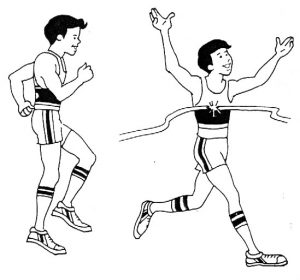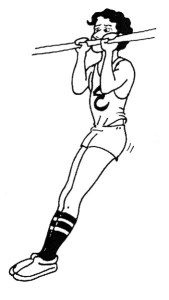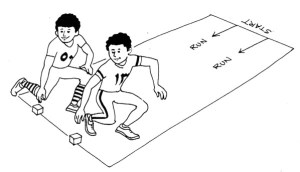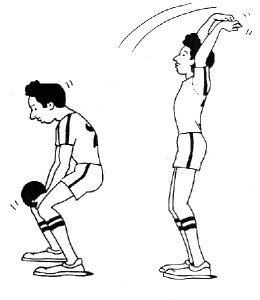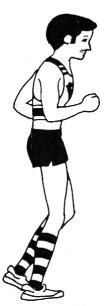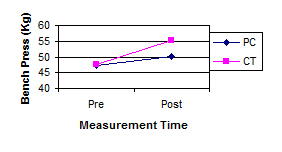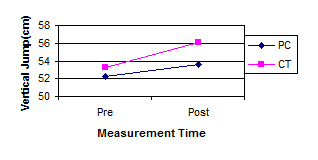The Individual Offensive Strategies of Taiwanese Collegiate Students in Basketball
Abstract
The
purpose of this study was to investigate the preferential
individual offensive strategies of male Taiwanese collegiate
students. A self-designed questionnaire was utilized to evaluate
students’ perception on offensive strategies. Subjects were
asked to select top-5 preferential strategies from nine choices
as they were put at specific spots based on the role of a
position. Among the 185 completed surveys, the number of valid
surveys was 163 that yielded a 78% return-rate. The statistical
methods for analyses included descriptive statistics and Chi-square
analyses. The alpha level was set at .05. Based on the results
of Chi-square, there were significant differences existed
among subjects’ choices on offensive strategies (p<0.05).
No significant differences (p<0.05) were found when subjects’
choices were compared at different side of blocks. The descriptive
analyses indicated that the number-one offensive choice at
the both sides of low post area for center, power forward,
and point guard were “pivoting”, “screening”,
and “catching the ball”, respectively. The favorite
offensive strategies of small forward and shooting guard were
“catching the ball” and “getting open”
at the right block, and their choices were simply switched
at the other block. At the top of the key, the number-one
offensive choice for center, power forward, small forward,
shooting guard and point guard were “setting screen”,
“pivoting”, “getting open”, “getting
open”, and “catching the ball”, respectively.
Apparently, subjects’ top-three choices on offensive strategies
had clearly demonstrated the common mentalities that were
instructed by many basketball coaches. However, since “shooting”
was not a top-3 choice at any spot for any role, coaches may
need to encourage students to take more shots.
Introduction
Purpose
of the Study
Basketball is one of the most popular sport activities among
Taiwanese collegiate students. It is also the most popular
sport among all of the PE curriculums at the collegiate level
in Taiwan. Basketball involves several basic playing skills
such as running, jumping, catching, passing, rebounding, shooting,
dunking and various combinations of movements. Due to variances
in size, fitness level, specific technique, and offensive
strategies, players usually are assigned to different playing
roles and positions. Generally their roles can be divided
into the following five different positions: power forward,
small forward, center, point guard, and shooting guard (Lee,
2000; and Huang & Wang, 2002). Based on players’ specific
roles on the court, each position usually would demonstrate
a unique style of play at different spots of the court. For
examples, forward players can be extremely active around the
free-throw line extended area. They should be able to score
both in the paint and perimeter. They are usually the best
scorers of the team, and should involve in some rebounding
and passing duties. This is why most of forwards need to possess
great size, speed and leaping ability (Wu, 1998). Most of
the centers work in an area less than 5m away from the basket
(Wong, 1999b). They work at an area that is always under heavy
traffic. Since they usually initiate the attack at the low-post
area, they must possess skills to catch the ball firmly, seal
off the defender, and use all kinds of fake moves to score
(Wong, 1999b; Wang & Wang, 2002). Centers must have ability
to score one-on-one and secure rebounds. Defensively, they
usually provide the best help on penetrations (Wang, 1997b);
therefore, the strength of the center may indicate the success
of the team. Guards are usually the “core” of a
basketball team. They are usually the leaders and the organizers
of the team offense. They normally operate at the top of the
key and try to create shooting opportunities for other teammates
by making good pass and penetration. They should be a good
long and mid-range shooter, and also score in penetrations
(Huang & Wang, 2002). In order to fully maximize the playing
ability of each specific position, coaches would also teach
necessary techniques to elevate players’ individual skills.
Possessing strong individual offensive skills is an essential
element to build the team offenses and success. The skills
that players have acquired would naturally become preferential
moves under circumstances.
Many
of the previous researches on offenses had geared toward the
analyses of a team’s offensive patterns (Chao & Chao,
1995; Lu, 1996; Pan, 1997; Wong, 1998 and 1999a; and Hsu 2002).
They provided less information on individual offensive skills
and teaching tips for collegiate students to learn the individual
skills. The authors of the article wish to examine how collegiate
students perceive a specific situation and formulate their
offensive strategies at certain locations. Hopefully, this
study can provide useful concepts and norms to help students
build up understanding of the game and acquire proper offensive
techniques.
This
study examines the individual offensive strategies of students
by observing how they would initiate a movement in a designated
situation without concerning the presence of defenders. Although
in reality, the presence of defenders certainly would affect
a player’s determination on moves, this study would neglect
this factor and directly record the preferential response
of players at a particular location. Since there are always
some certain preferential acts that a person may engage based
on the human behavior, we can all assume that there must be
some types of preferential offensive movements that players
may like to make in certain situations. The purpose of this
study would attempt to investigate those preferential individual
offensive strategies of Taiwanese collegiate players. The
research questions would focus on how a player initiate the
decision to make a move at various spots based on players’
perceptions of playing roles.
Methods
Subjects
and Scope of the Study
Two hundred and seven male students of the Mingchuan University
who have enrolled in the Spring Semester of the year 2001
were invited to participate in this study. They came from
seven different basketball classes and were varied in class-levels.
Researchers had obtained 185 returned questionnaires, and
22 copies were invalid. The number of valid copies was 163
that yielded 78% of return-rate. The average height and weight
of subjects were 170.72 + 7.9 cm and 62.57 + 10.02 kg, respectively.
Research
Tools
This study utilized a self-designed questionnaire to evaluate
students’ perception on offensive strategies. The contents
of the survey included two parts. The first part contained
demographic information such as height, weight, class-level,
varsity experience, and playing position. The second part
of the survey examined players’ offensive strategies. Three
spots were designated for the purpose of the study. They were
both right and left low-post blocks, and top of the key. Each
student had viewed and perceived the question based on the
role of a specific position, such as center, point guard,
or small forward, etc. Then he would select the top five preferential
choices as the offensive strategies according to the location
and the role that he had perceived. Nine offensive strategies
that were available for chosen included:
- dribbling,
- pivoting,
- catching
the ball, - shooting,
- cutting
down, - dribble
penetration, - getting
open, - setting
a screen, and - rebounding.
These
strategies were common basketball skills that were adapted
by players in different situations (Pan, 1997; Wang, 1998;
Huang & Wang, 2002; and Wang & Wang, 2002).
Data
Analyses
There were163 valid copies available for data analyses after
eliminating 22 copies of invalid questionnaires. The data
were analyzed by the SPSS for Window 10.0 program. The statistical
methods for analyses include descriptive statistics and Chi
square analyses. The alpha level was set at .05?
Results
General
Information of Descriptive Analyses
The general information listed subjects’ class-level, varsity
experience, and playing position. Basing on the class-level
distribution, sophomore was the biggest class that consisted
50 subjects (30.5%). Twenty-eight seniors (17.1%) made up
the smallest class. Most of the subjects (N= 89; 54.3%) had
participated for the intramural basketball teams or even high
levels before; and there were 75 (45.7%) subjects who have
never played an official basketball game yet. In term of players’
playing positions, 65 (39.6%) people had played forward position.
The numbers of players who played at guard and center positions
were 73 (44.5%) and 26(15.9%) respectively.
Preferences
on Offensive Moves at Each Designated Spot
The descriptive analyses concluded the following statements.
At the right low-post block, the number one offensive choice
for center, power forward, small forward, shooting guard and
point guard were “pivoting”, “screening”,
“catching the ball”, “getting open”, and
“catching the ball”, respectively. At the top of
the key, the number one offensive choice for center, power
forward, small forward, shooting guard and point guard were
“setting screen”, “pivoting”, “getting
open”, “getting open”, and “catching the
ball”, respectively. The favorite offensive strategies
of center, power forward, and point guard at the left low-post
block were exactly the same as theirs at the right side. The
exceptions were the choices of small forward and shooting
guard. Their choices just simply switched as the side had
changed. The Table 1. listed the top-3 preferences of subjects
at each different spots.
Table
1. The top-3 preferences of subjects at each different spots
|
Location
|
Preference
|
Role
of Positions |
||||
| Center | Power Forward |
Small Forward |
Shooting Guard |
Point Guard |
||
| Right block |
1 | (2) | (8) | (7) | (3) | (3) |
| 2 | (5) | (7) | (3) | (7) | (1) | |
| 3 | (1) | (5) | (6) | (6) | (8) | |
| Top of the key |
1 | (8) | (2) | (7) | (7) | (3) |
| 2 | (7) | (3) | (3) | (8) | (7) | |
| 3 | (9) | (6) | (8) | (3) | (1) | |
| Left block |
1 | (2) | (8) | (3) | (7) | (3) |
| 2 | (5) | (6) | (7) | (3) | (7) | |
| 3 | (6) | (9) | (8) | (6) | (1) |
*
(1) dribbling, (2) pivoting, (3) catching the ball, (4) shooting,
(5) cutting down, (6) dribble penetration, (7) getting open,
(8) setting a screen, and (9) rebounding
Based
on the results of Chi-square, there were significant differences
existed among subjects’ choices on offensive strategies (p<0.05).
This means that students actually favor certain kind of choices
at each spot in term of viewing themselves through a specific
role of positions. However no significant difference (p<0.05)
was found when subjects’ choices were compared for different
side of blocks.
Conclusions
and suggestions
According
to results of the study, there were significant differences
existed among subjects’ choices (p<0.05) in term of viewing
from a specific role of positions. Since each position usually
has been trained to follow a specific role, the results of
the study clearly show this phenomenon. Perimeter players
such as point guard, shooting guard and small forward would
try to receive passes or get open for clear passes at the
low-post block. They are usually taught by the coaches to
get open in order to score an easy basket under the rim or
shoot from outside (Huang & Wang, 2002). Inside players
such as center and power forward would demonstrate the fundamental
low post move by showing “the pivot” move. They
were also taught to set screens at both high- or low-post
(Lu, 1996; and Wong & Shuei, 1998). Apparently, subjects’
top-three choices on offensive strategies have demonstrated
the common mentalities that were instructed by many basketball
coaches.
A
good sign to notify is that subjects did not perceive their
offensive strategies differently at the opposite side of the
block, either. This means that players may not decide to do
one thing at a particular side, but never intend to do the
same move at the opposite side. Otherwise, they choice will
become very predictable at one spot.
Surprisingly, “shooting” was not a top-3 choice
at any spot according to any role. This may indicate that
players are probably too cautious about their move, or they
are afraid of taking shots (perhaps due to lack of confidence).
Most of the coaches in the United States will emphasize the
importance of power plays. It is probably more appropriate
to see those who play at center and power forward positions
looking for shots more often (Wong, 1999b). Taiwanese coaches
may need to point out this fact during classes and practices.
References
Chao,
C.P., & Chao, J.C. (1995). Zone defenses in basketball.
University and College
Physical Education, 16, 66-74.
Hsu,
H.H. (2002). Three-men offense in basketball. University and
College
Physical Education, 60, 39-42.
Huang,
H.H., & Wang, L. (2002). Analysis of woman basketball
skills. Journal of Deh
Yu College of Nursing and Management, 17, 53-63.
Lee,
C.H. (2000). An easy way to learn basketball. Taipei, Taiwan:
Er-chiang Publishing.
Lu,
C.S. (1996). A study of male college Secondary Class basketball
players in attacked-
defense skill. Journal of National Art Institute, 59, 376-386.
Pan,
Y.H. (1997). The analyses of defensive and offensive strategies
in basketball.
University and College Physical Education, 32, 103-108.
Wang, T.M. (1997a). The team-offense skills and their instructional
designs for post
players in basketball. University Taiwan University Physical
Education, 28, 55-61.
Wang,
T.M. (1997b). Both offensive and defensive skills and their
instructional designs
for post players in basketball. University Taiwan University
Physical Education, 28, 63-72.
Wang,
Y.M., & Wang H.C. (2002). Different types of fakes in
basketball. Physical
Education of College and University, 60, 17-21.
Wong,
T.L., & Shuei, H.P. (1998). Move without the ball as an
offensive strategy in
basketball games. National Education, 39(2), 66-70.
Wong,
T.L. (1999a). Team offenses. National Education, 39(4), 34-39.
Wong,
T.L. (1999b). The offensive strategies of inside moves for
low post players.
Taiwan Sports, 102, 36-39.
Wu,
B.Y. (1998). Developing a forward player. Journal of Tungnan
College, 21, 219-224.


